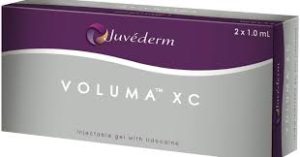In the past fifteen years injectable fillers have evolved into a wide number of types of facial augmentations as well as the number of available synthetic fillers. One facial area that has become popular for treatment are undereye hollows. Known as the infraorbital region it is a collection of areas under the eye along the lower orbital rim and out into the cheek area. Aging and congenital lack of bony support and fat development creates a lack of fullness of the lower eyelid, skeletonization of the bony rim and creases or grooves in the soft issue below the bony rim.
Injectable fillers are the first line of treatment for infraorbital hollows because of their relative simplicity and effectiveness. Many different injectable fillers have been used although none are specifically FDA-approved for injection in this facial area. Few clinical studies have been published in the outcomes of infraorbital hollows injections although it is commonly done.

Temporary complications included bruising (10%), irregularities (2%) and the Tyndall effect. (1%) Reduction or reversal of the injection material was done with hyaluronidase in 3% of the patients. Additional treatments were done in almost 20% of the patients within three months of the initial treatment.
Post-treatment surveys were completed in just over 40 patients with an overall mean satisfaction of the treatment at 65% to 71% depending on the surgery used.
Given the thin tissues of the lower eyelid area, the question is how well do injectable fillers work in this facial area and what complications are seen. In this study up to 1/3 of the treated patients developed some temporary aesthetic complication. This is reflected in roughly two-thirds satisfied patients in the limited number of patients who returned surveys. This is not surprising given the tissue quality of the lower eyelid which is unforgiving in contour assessment and visibility. Patients should be so advised that touchups for irregularities and under- or overcorrections are not rare.
What this study also shows is that the more viscous injectable filler, Juvederm Volume XC, can be used in the lower eyelids with good outcomes. How long this or any injectable filler lasts in the lower eyelid was not the purpose of this study although it is believed to last longer than in any facial areas.
Dr. Barry Eppley
Indianapolis, Indiana


